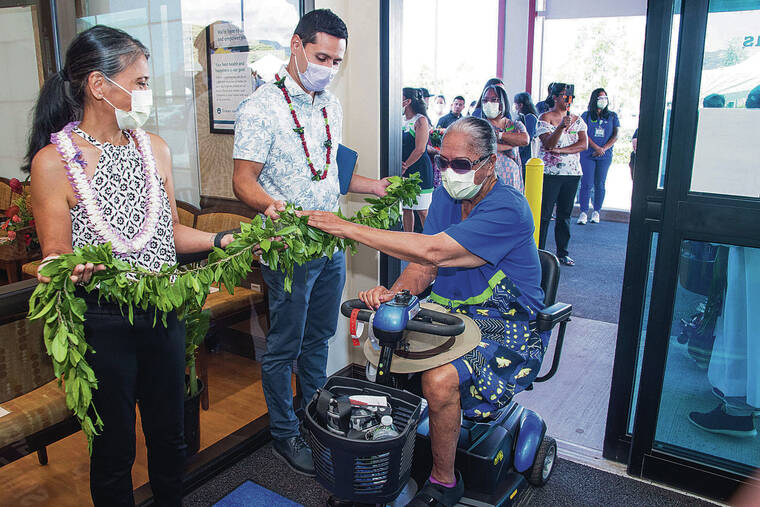For those in Hawaii suffering from chronic kidney disease (CKD), the blessing of the new Waianae Coast Nanakuli Dialysis Clinic this week must have been a welcome sight.
An estimated 50,000 people in Hawaii have been formally diagnosed with CKD, a precursor to end stage renal disease (ESRD), when the liver fails.
For ESRD patients, dialysis can be the difference between life and death. The process cleans their blood and filters out dangerous levels of toxins and waste, like a working kidney does. Unfortunately, the process is time-consuming — three times a week for about four hours each time — and physically exhausting.
A shortage of space exacerbates the problem, as patients struggle for slots in a center’s schedule — if they can get in at all.
“We had been going to Waianae trying to get a seat out there at 4 or 5 at night and coming out at 11 p.m., and I would have to work the next morning,” said Sheila Silva, who takes her boyfriend to get treatment.
The new clinic in Nanakuli gives them better options. It also should take some of the pressure off other clinics in Ewa, Kapolei and Waipahu, which have taken patients who can’t get into the Waianae facility.
The state Department of Health lists 37 dialysis centers on its website. Expanding the number of centers to meet the demand, especially in rural areas with high incidences of diabetes and high blood pressure, should be an important priority for public health officials, both locally and nationally. Easing entry requirements for dialysis providers could help.
Alternatives also should be explored.
Promoting new technologies, and expanding the use of at-home dialysis machines, could help ease the burden.
Improving access to organ transplants remains a challenge worth tackling. Kidney transplants, the only other option for ESRD patients, are hard to come by; the American Kidney Fund reported that only about 1 in 7 Hawaii patients on the waiting list got a kidney transplant in 2020.
Of course, the best option is to avoid CKD and ESRD in the first place.
Educating at-risk patients can make a big difference. They should understand the perils of high blood pressure and diabetes, and the importance of a healthy lifestyle. Also, early treatment can help slow or stop kidney disease, so patients should be diligent about getting the blood and urine tests that can detect trouble — and save a life.

